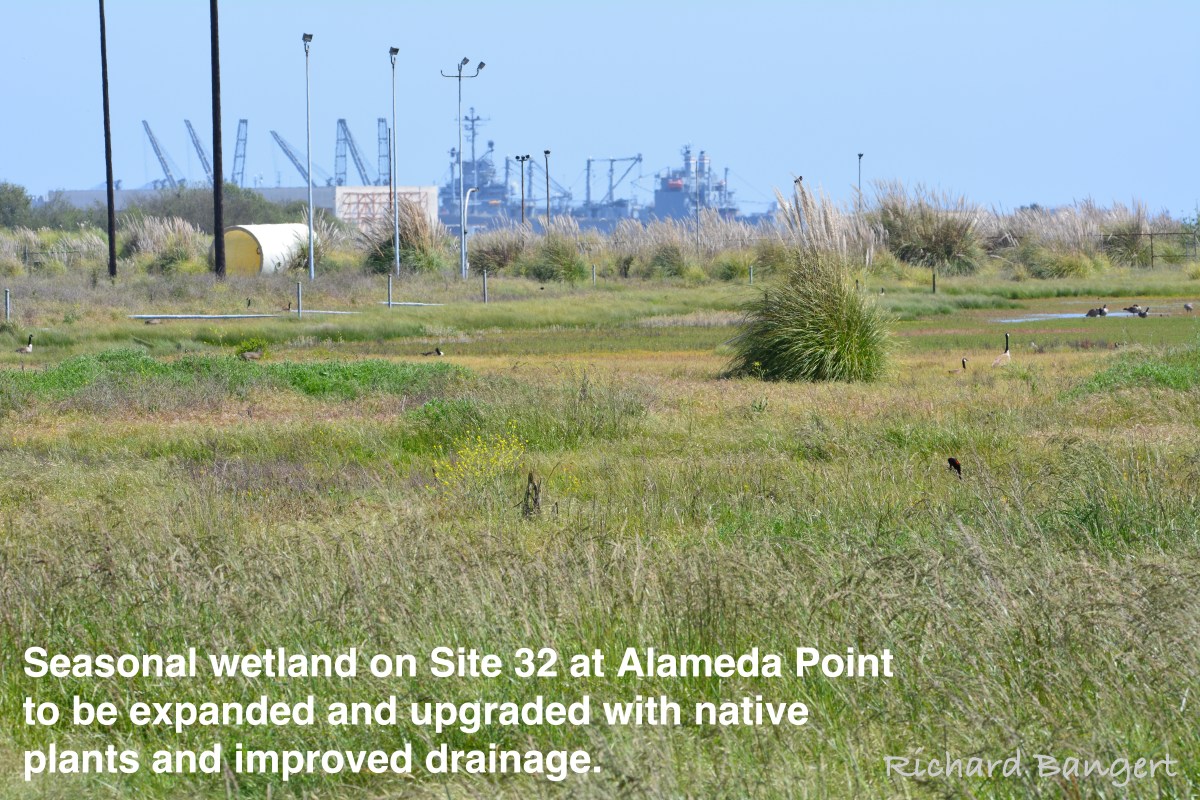The Navy is nearing completion of plans for a cleanup area called Site 32, 60 acres that lie on the old airfield west of where the monthly Antiques Faire is held. The site requires remediation because investigators discovered radium-226 in the soil and on various objects. The Navy mixed radium-226, a naturally occurring mineral, with paint to allow dials and markers to glow in the dark. Repeated exposure to high levels of radium can cause cancer.
The Navy collected radium-impacted waste, such as used paint brushes from refurbishing dials and gauges, scraping solids, and rags, from its dial painting shop on a regular basis and discarded it at the Site 1 underground dump adjacent to Site 32. The Navy presumes that the radium-impacted items were spread beyond the dump site when the runway was expanded in the 1950s and a bulldozer was used to grade the area above the dump.

The plan calls for re-engineering the existing seasonal wetlands and expanding them. The entire site will be covered with three feet of clean soil after the wetlands and land contours have been re-engineered. The Navy will demolish several buildings on the site, but keep the massive 5,000-square-foot concrete bunker in place. Rather than removing it, the bunker will be covered with soil and plants. This elevated site feature will provide enhanced watershed for the two wetlands.

The existing wetlands totaling 10 acres will be expanded to 15 acres, and the existing watershed draining to the wetlands will be doubled in size. Native grasses and shrubs will be planted throughout the 60 acres.
In order to ensure that the seeds will sprout and thrive, the contractor is planning to install a temporary irrigation system. Seeded soil covers at two other remediation sites on the old airfield have struggled due to drought and unreliable rainfall, requiring re-seeding in both cases. On this project, the contractor is responsible for the success of the vegetation for 18 months, according to Cecily Sabedra, Environmental Coordinator for the Navy.
With all the bad news about radioactive cleanup at Hunters Point Naval Shipyard in San Francisco, it may be reassuring to know how the Navy and its contractors conducted the cleanup process at Sites 1 and 32. Rather than minimizing health threats and falsifying data, as reported about Hunters Point, the two decades of radiological investigations at these Alameda Point sites were exhaustive. Testing was conducted by multiple contractors, including TetraTech whose findings were validated by a completely different contractor, which led to expanding the remediation area.
Originally, the thinking was that contamination was only at the dump site. But when soil sampling and scanning revealed a few radioactive hotspots at the perimeter of the dump, a new scanning plan was implemented covering 75 acres of adjacent open land. After analyzing 283,000 scanning measurements and dozens of soil samples, the Navy and regulators determined that 60 acres needed remediation.
An example of the radioactive items discovered during scanning – discrete artifacts as they are called – turned out to be glass vials that were used to transport radium paint ingredients to the paint shop. Once the vials were emptied but not thoroughly cleaned, they would have been discarded at the Site 1 dump.
Work at Site 32 will begin in January and be completed by the end of 2019. This will be the Navy’s third wetland expansion and enhancement at Alameda Point. The site is part of the 158-acre area along the Oakland harbor proposed for a regional park.
In other cleanup news, at the January 10 Restoration Advisory Board meeting, the Navy will be making presentations on recent cleanup milestones and plans for 2019. There will also be a special presentation on the petroleum cleanup program. The meeting begins at 6:30 p.m. at City Hall West, 950 W. Mall Square, 2nd Floor, on Alameda Point. The public is invited.
Originally published in the Alameda Sun.
Background document on radiological investigations:
Excerpt: “In 2004, Tetra Tech EC, Inc. conducted a radiological characterization survey at IR Sites 1 and 2. The primary objective of the survey was to characterize the potential Radium-226 contamination that may be present. During the radiological survey of IR Site 1, an elevated radiological reading was identified on the eastern boundary, which borders IR Site 32.”



One thought on “Navy to create new wetlands”